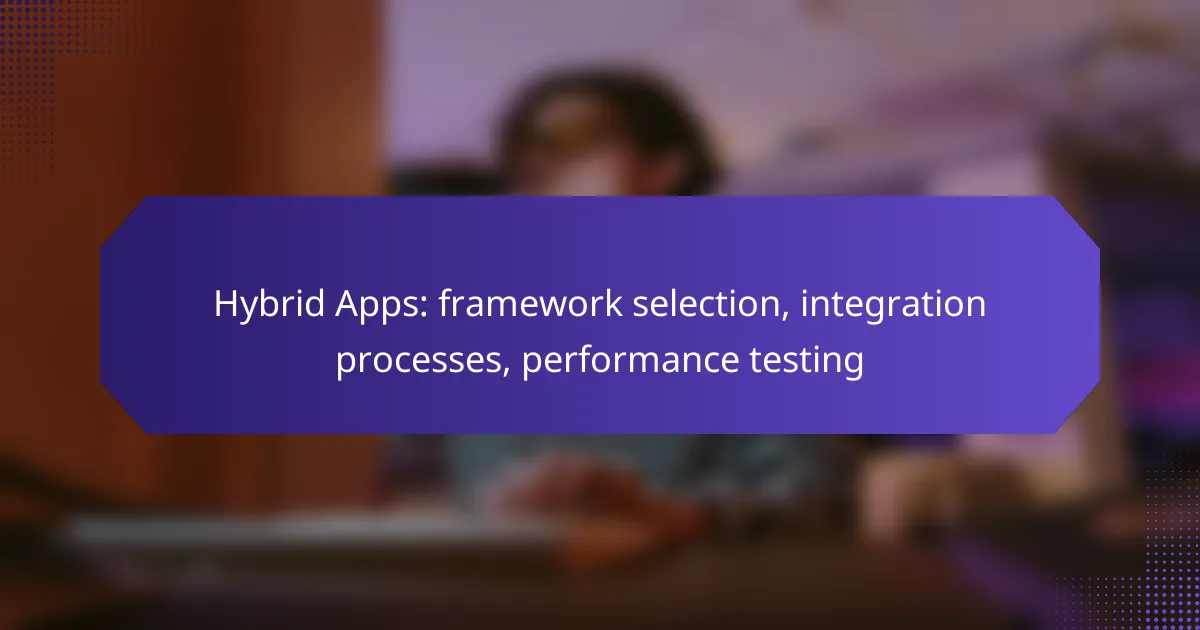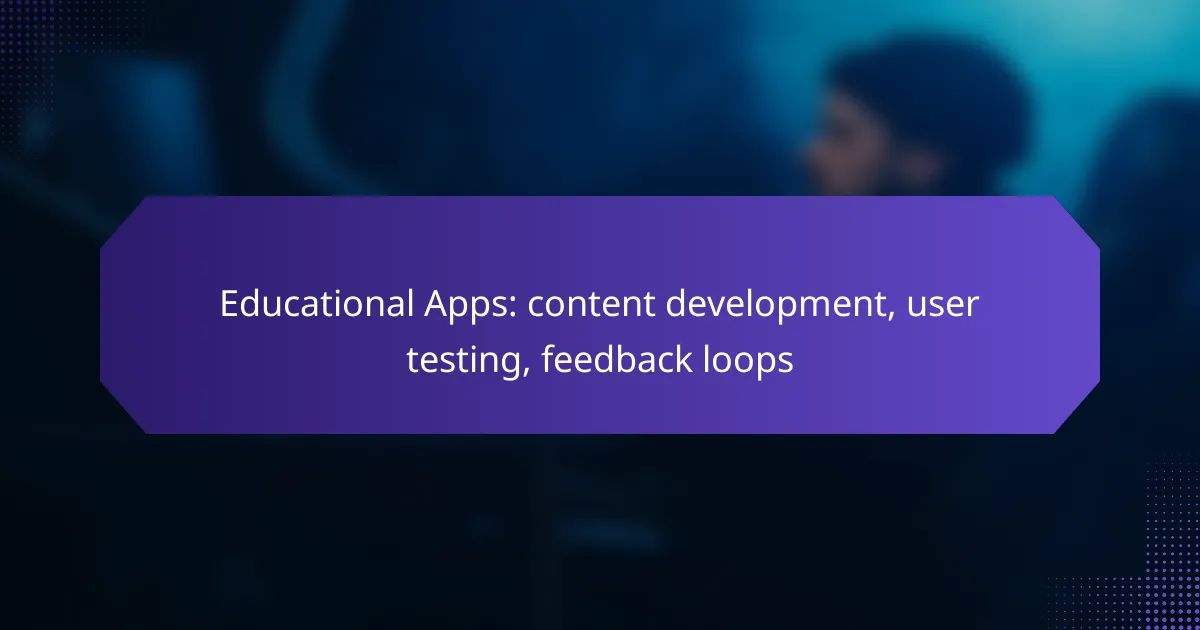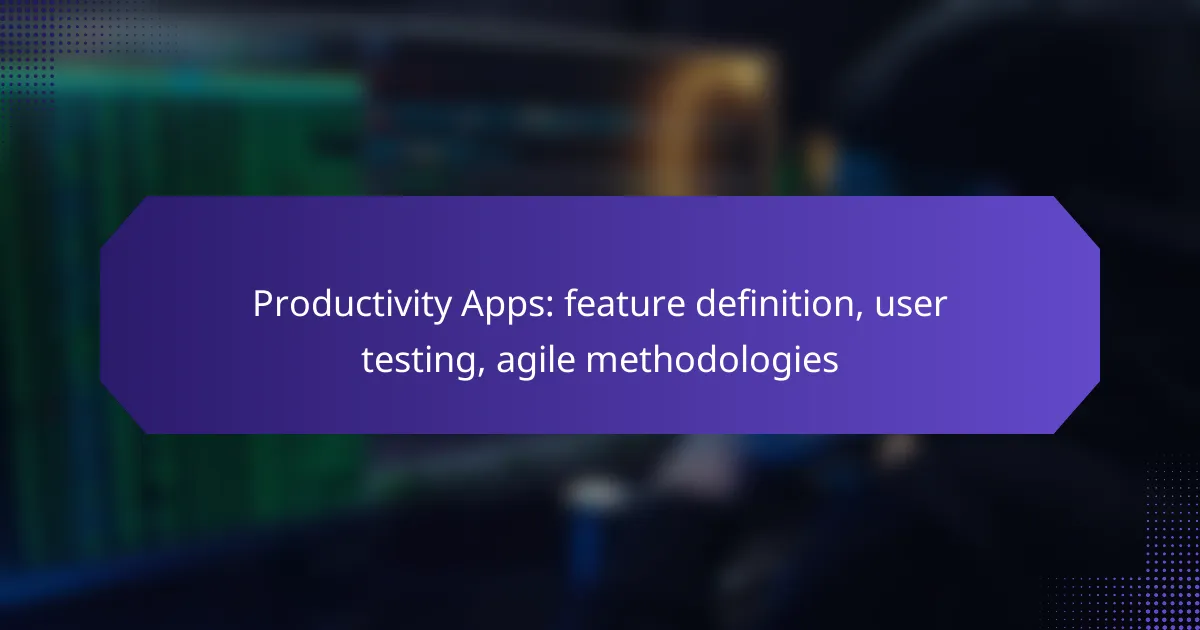Web apps rely on a blend of advanced technologies to optimize performance and user experience, making it essential to select the right frameworks and languages based on project needs. Implementing responsive design is crucial for ensuring that applications function smoothly across different devices, enhancing accessibility for users. Additionally, adopting effective deployment strategies, such as continuous integration and cloud hosting, can streamline updates and maintain reliability in performance.

What are the best web technologies for web apps in the UK?
The best web technologies for web apps in the UK include a combination of frameworks, languages, and services that enhance performance, user experience, and scalability. Key considerations involve choosing the right tools that align with project requirements, team expertise, and user expectations.
JavaScript frameworks
JavaScript frameworks like React, Angular, and Vue.js are essential for building dynamic web applications. These frameworks provide robust libraries and tools that streamline development, making it easier to create interactive user interfaces.
When selecting a framework, consider factors such as community support, ease of integration, and performance. React is often favored for its component-based architecture, while Angular is known for its comprehensive features, and Vue.js is appreciated for its simplicity and flexibility.
HTML5 and CSS3
HTML5 and CSS3 are foundational technologies for web apps, providing structure and style. HTML5 introduces new elements and APIs that enhance multimedia support and improve accessibility, while CSS3 offers advanced styling options, including animations and responsive design capabilities.
Utilizing these technologies effectively can lead to better user experiences. For example, using semantic HTML5 elements can improve SEO and accessibility, while CSS3 media queries enable responsive layouts that adapt to various screen sizes.
Progressive Web Apps
Progressive Web Apps (PWAs) combine the best of web and mobile apps, offering offline capabilities, push notifications, and fast loading times. They leverage modern web technologies to deliver a native app-like experience directly through the browser.
To implement a PWA, ensure your web app meets key criteria such as being served over HTTPS, having a web app manifest, and utilizing service workers for offline functionality. This approach can significantly enhance user engagement and retention.
Cloud services
Cloud services like AWS, Azure, and Google Cloud provide scalable infrastructure for hosting web apps. These platforms offer various services, including storage, databases, and serverless computing, which can reduce operational costs and improve deployment efficiency.
When choosing a cloud service, consider factors such as pricing models, geographical data centers, and compliance with UK data protection regulations. Many providers offer free tiers or credits for new users, making it easier to experiment without significant upfront costs.
APIs and microservices
APIs and microservices architecture allow for modular development of web apps, enabling teams to build, deploy, and scale components independently. This approach enhances flexibility and can improve the overall performance of the application.
When designing APIs, focus on RESTful principles or GraphQL for efficient data retrieval. Additionally, consider using containerization tools like Docker to manage microservices, which can simplify deployment and scaling across different environments.
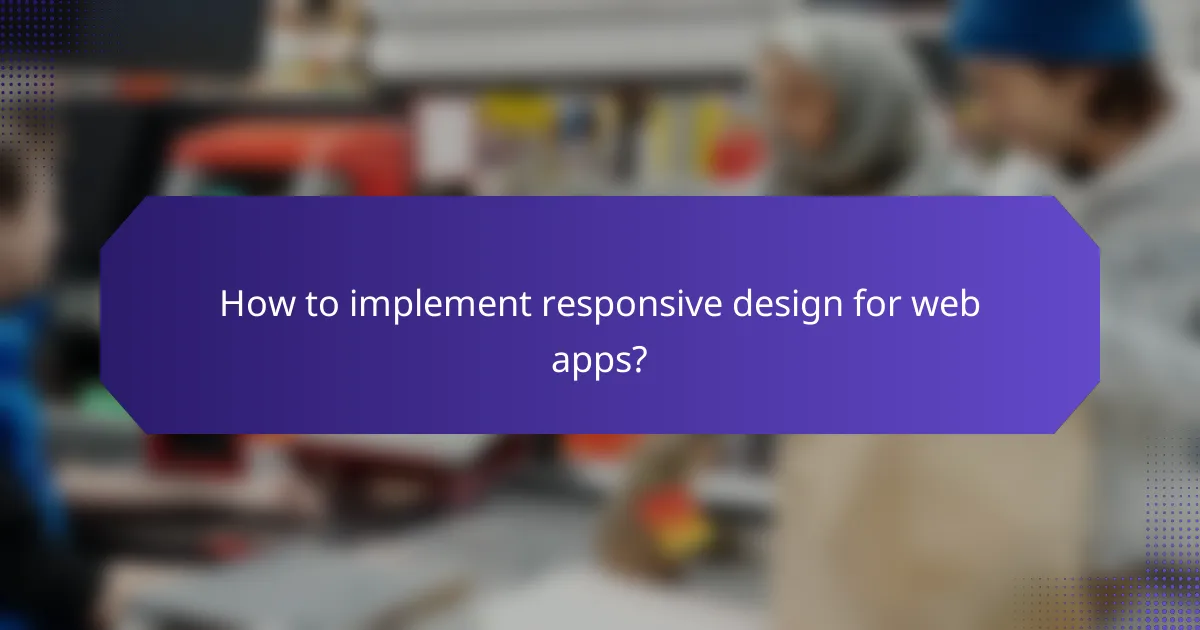
How to implement responsive design for web apps?
To implement responsive design for web apps, focus on creating a layout that adapts seamlessly to various screen sizes and orientations. This approach enhances user experience across devices, ensuring accessibility and usability.
Mobile-first design approach
The mobile-first design approach prioritizes designing for smaller screens before scaling up to larger devices. This strategy encourages developers to focus on essential features and content, resulting in a cleaner and more efficient user interface.
Start by creating a basic layout for mobile devices, then progressively enhance it for tablets and desktops. This method often leads to faster load times and improved performance on mobile networks.
CSS media queries
CSS media queries are a fundamental tool for implementing responsive design, allowing styles to change based on device characteristics such as width, height, and orientation. By using media queries, you can apply different CSS rules to different devices, ensuring optimal display.
A common practice is to set breakpoints at specific screen widths, such as 480px for mobile, 768px for tablets, and 1024px for desktops. This enables a tailored experience for each device type.
Flexible grid layouts
Flexible grid layouts use relative units like percentages instead of fixed units like pixels, allowing elements to resize proportionally to the screen size. This approach ensures that your layout remains consistent and visually appealing across various devices.
Consider using frameworks like Bootstrap or CSS Grid, which provide pre-defined classes and structures for creating responsive grids. This can significantly speed up development while maintaining design integrity.
Responsive images
Responsive images adjust to different screen sizes and resolutions, improving load times and user experience. Use the srcset attribute in HTML to specify multiple image sources for different display conditions.
Additionally, consider using formats like WebP for better compression and quality. Always ensure images are optimized for the web to reduce loading times, especially on mobile networks.

What are effective deployment strategies for web apps?
Effective deployment strategies for web apps ensure seamless updates and reliable performance. Key approaches include continuous integration and deployment, containerization, cloud hosting, and version control systems, each contributing to a more efficient and manageable deployment process.
Continuous integration and deployment
Continuous integration (CI) and continuous deployment (CD) streamline the process of integrating code changes and deploying them to production. CI involves automatically testing and merging code changes into a shared repository, while CD ensures that these changes are deployed to users quickly and reliably.
To implement CI/CD, consider using tools like Jenkins, CircleCI, or GitHub Actions. These tools automate testing and deployment, reducing the risk of errors and enabling faster release cycles. Aim for frequent, smaller updates rather than infrequent, large releases to minimize disruption.
Containerization with Docker
Containerization using Docker allows developers to package applications and their dependencies into isolated containers. This ensures that the application runs consistently across different environments, from development to production.
When using Docker, create a Dockerfile to define your application environment and dependencies. This approach simplifies deployment and scaling, as containers can be easily replicated and managed. Additionally, consider using orchestration tools like Kubernetes for managing multiple containers effectively.
Cloud hosting solutions
Cloud hosting solutions provide scalable and flexible environments for deploying web applications. Providers like AWS, Google Cloud, and Microsoft Azure offer various services that cater to different deployment needs, from virtual machines to serverless architectures.
When selecting a cloud provider, evaluate factors such as pricing, performance, and available services. For example, using serverless functions can reduce costs for applications with variable traffic. Always consider data security and compliance with local regulations when deploying in the cloud.
Version control systems
Version control systems (VCS) are essential for managing changes to your codebase over time. Tools like Git enable teams to collaborate effectively, track changes, and revert to previous versions if necessary.
To maximize the benefits of a VCS, establish a clear branching strategy, such as Git Flow, to manage feature development and releases. Regularly commit changes and write meaningful commit messages to maintain a clear project history. This practice not only improves collaboration but also enhances the overall deployment process.
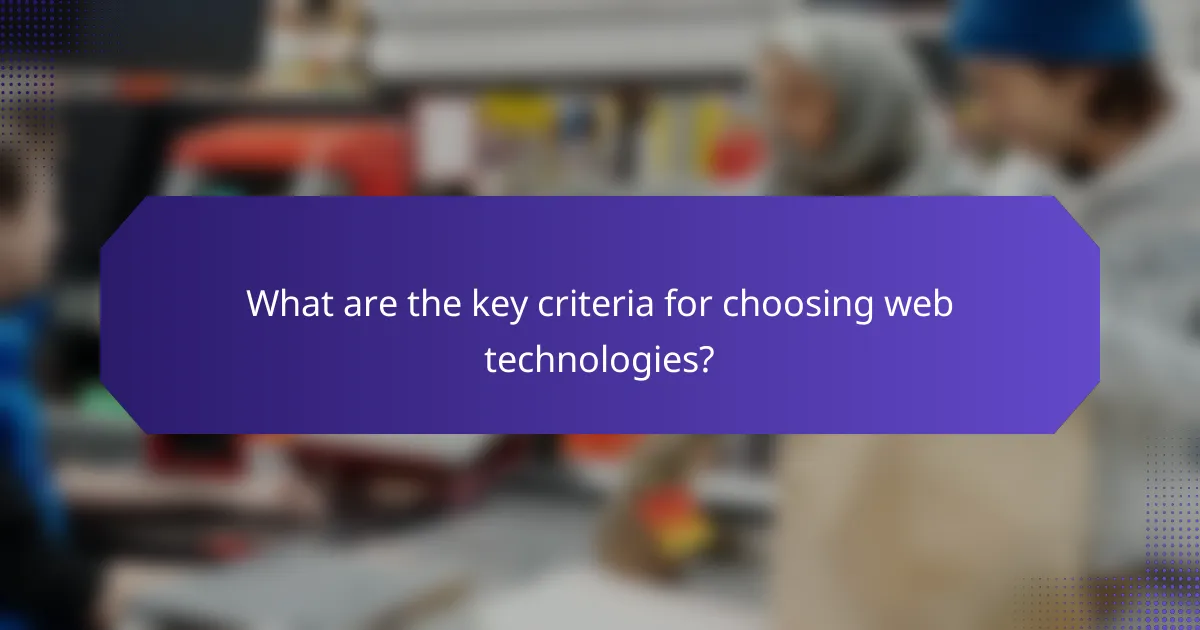
What are the key criteria for choosing web technologies?
When selecting web technologies, consider factors such as scalability, development team expertise, and project requirements. These criteria help ensure that the chosen technologies align with both current needs and future growth.
Scalability requirements
Scalability is crucial for web applications that expect to grow in user base or functionality. Evaluate whether the technology can handle increased loads without significant performance degradation. For instance, cloud-based solutions often provide better scalability options compared to traditional hosting.
Consider using microservices architecture, which allows individual components to scale independently. This approach can be beneficial for applications that experience fluctuating traffic patterns, as it enables targeted resource allocation.
Development team expertise
The expertise of your development team significantly influences technology selection. Assess the team’s familiarity with specific programming languages, frameworks, and tools. Choosing technologies that your team is already skilled in can reduce development time and costs.
If your team has strong experience with JavaScript frameworks like React or Angular, leveraging these can lead to faster project completion. Conversely, opting for unfamiliar technologies may result in a steep learning curve and potential delays.







